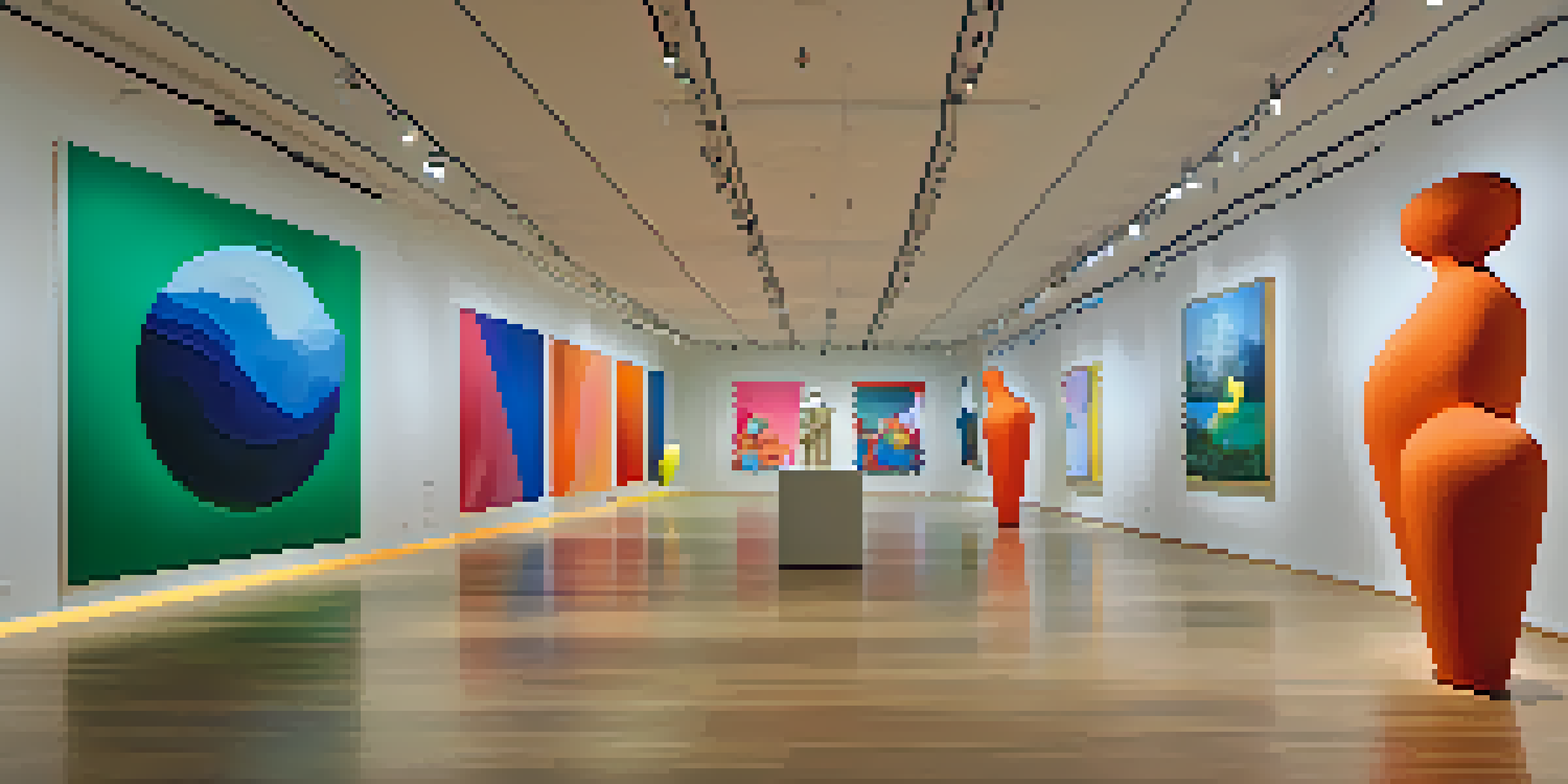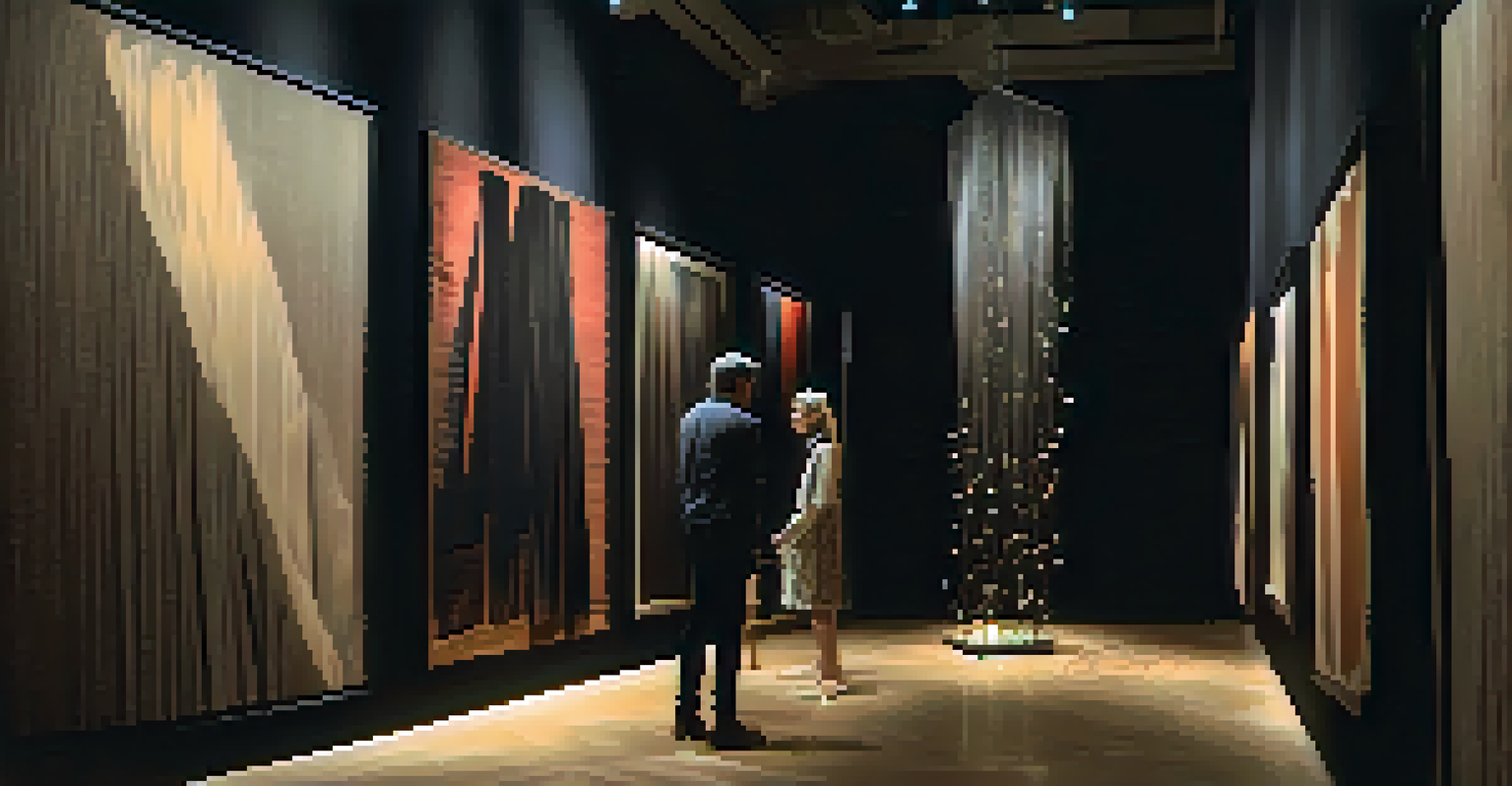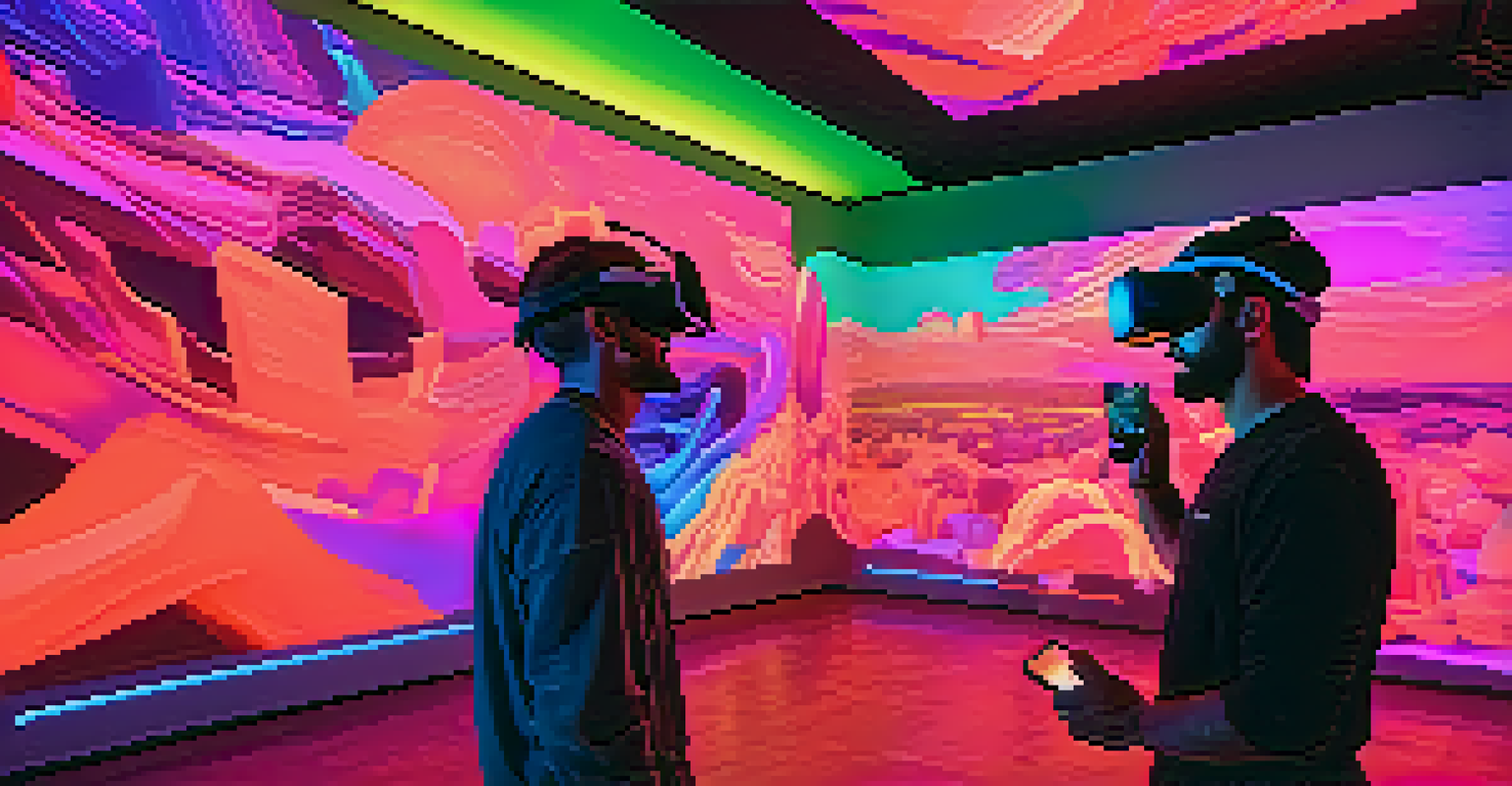Understanding Installation Art: Space, Context, and Experience

What is Installation Art? A Quick Overview
Installation art is a unique form of contemporary art that transforms a space into an immersive experience. Unlike traditional art forms, it often encourages interaction and invites viewers to engage with the art on a deeper level. This art genre can be made from various materials, including video, sound, and sculpture, making it incredibly versatile.
Installation art is not just a form of art; it is a space of dialogue between the artist and the viewer.
Imagine walking into a room and being enveloped by colors, sounds, or even scents; that's the essence of installation art. It breaks the boundaries of the conventional art experience, pushing the audience to become part of the artwork itself. This interactive quality is what sets installation art apart from more static forms like painting or sculpture.
Overall, installation art challenges the traditional notions of what art can be, sparking curiosity and inviting viewers to explore their surroundings in new ways. As you delve deeper into its characteristics, you'll discover a rich world where space and experience intertwine.
The Role of Space in Installation Art
Space plays a crucial role in installation art, as the artwork is often created specifically for its environment. Artists consider factors such as architecture, lighting, and even the location's history, allowing the installation to resonate with its surroundings. This interplay between art and space creates a dialogue that enhances the viewer's experience.

For example, an installation in a vast, open gallery will feel markedly different from one in a small, intimate setting. The choice of space can evoke different emotions and reactions from the audience, influencing how they interpret the work. This relationship emphasizes that art is not just about the object itself; it’s about the context in which it is presented.
Installation Art Transforms Spaces
Installation art creates immersive experiences by transforming physical spaces, allowing viewers to engage with art in a dynamic way.
Thus, understanding the significance of space in installation art is essential for fully appreciating the artist's intentions. The environment becomes an integral part of the artwork, transforming how we engage with it and the narratives it conveys.
Context: Historical and Cultural Influences
Context is vital in understanding installation art, as it reflects historical and cultural narratives that shape our perception. Artists often draw inspiration from societal issues, personal experiences, or cultural traditions, embedding these themes into their installations. This depth allows viewers to connect more profoundly with the work.
Art is not what you see, but what you make others see.
Take, for instance, an installation that addresses climate change; the context informs how viewers respond to the piece, potentially evoking feelings of urgency or reflection. The cultural background of the artist also plays a role, as it can influence the symbols and materials used, further enriching the experience. The context acts as a lens through which we can appreciate the artwork's significance.
Therefore, engaging with the context of installation art enhances our understanding and appreciation. It invites us to explore the layers of meaning behind the work, ultimately enriching our experience as we connect with the broader narratives at play.
Viewer Experience: Interaction and Engagement
One of the most captivating aspects of installation art is its focus on viewer experience. Unlike traditional forms of art that often remain passive, installation art encourages active participation. This interaction can take many forms, from physically navigating the space to engaging with the materials or concepts presented.
Consider an installation that requires you to walk through a series of environments; each step changes your perspective and understanding of the piece. This immersive experience often leads to a more personal connection, as viewers become co-creators in the narrative. The emotional and sensory responses elicited by such interactions can be profound and transformative.
Context Shapes Viewer Experience
The historical and cultural context of installation art enriches the viewer's understanding and emotional response to the work.
Ultimately, the emphasis on viewer experience in installation art highlights the importance of engagement in our interaction with art. It challenges us to think critically and reflect on our role within the artwork, making the experience both memorable and impactful.
Emotional Impact: Conveying Feelings Through Space
Installation art has a unique ability to convey emotions through the careful manipulation of space and materials. The atmosphere created by an installation can evoke a wide range of feelings, from joy and wonder to sadness and contemplation. Artists use elements like color, sound, and light to craft an emotional landscape that resonates with the audience.
For instance, a dark, enclosed space filled with haunting sounds can create a sense of unease, prompting viewers to confront their feelings about fear or isolation. Conversely, bright colors and open spaces can inspire feelings of happiness and freedom. This emotional interplay is what makes installation art so compelling and relatable.
In essence, the emotional impact of installation art lies in its ability to connect with us on a human level. It allows us to explore our feelings and experiences, often leading to moments of introspection and insight that linger long after we leave the space.
The Future of Installation Art: Trends and Innovations
As we look to the future, installation art continues to evolve, incorporating new technologies and innovative approaches. Artists are increasingly using virtual and augmented reality to create immersive experiences that challenge our perceptions of space and reality. These advancements open up exciting possibilities for how we engage with art.
For example, imagine stepping into a virtual installation that transports you to another world or allows you to interact with elements in ways previously unimaginable. This merging of technology and art not only enhances the viewer experience but also expands the definition of what installation art can be. It invites us to rethink our relationship with art in a digital age.
Future Trends in Installation Art
Emerging technologies like virtual and augmented reality are expanding the possibilities of installation art, reshaping how we interact with it.
Ultimately, the future of installation art promises to be a dynamic and transformative landscape. As artists continue to push boundaries, we can expect to see groundbreaking works that invite us to explore new realms of creativity and experience.
Conclusion: The Enduring Significance of Installation Art
In conclusion, installation art is a powerful medium that invites us to engage with art in profound ways. By transforming space and context, it creates immersive experiences that resonate on multiple levels. Whether through emotional impact, viewer interaction, or the incorporation of technology, installation art challenges us to explore our surroundings and ourselves.
As we continue to appreciate the significance of installation art, it's essential to recognize its role in shaping contemporary culture and discourse. It encourages us to question our perceptions and interactions with the world around us, fostering a deeper understanding of our shared experiences. Through this lens, we can appreciate the beauty and complexity of installation art.

Ultimately, installation art serves as a reminder of the power of creativity and the human experience. It invites us to step into new worlds, challenge our perspectives, and embrace the richness of our interactions with art and each other.